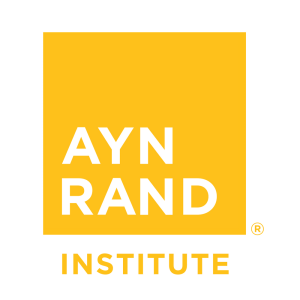|
This is read by a computer-generated voice.
Getting your Trinity Audio player ready...
|
The “reading wars” are on again. The last two years have seen renewed debate over the role of phonics, teaching the connections between letters and sounds, in reading instruction. The case for the vital importance of phonics has been presented in major publications, like the New York Times,1 which has also documented the progress of pro-phonics legislation in many states. The American Public Media podcast series Sold a Story,2 which played a significant role in elevating the pro-phonics case, has been downloaded by millions.
Almost everyone involved in the reading debate says that phonics matters and that it should be taught. The key controversy is over whether it should be taught systematically, or just from time to time, intermixed with other methods. Systematic phonics instruction means explicitly teaching all the sound-letter connections needed to read English in a logically structured sequence. Opponents of this approach treat phonics as one ingredient in a recipe that can be mixed and matched in varying quantities depending on context and preference.
But decades of scientific research support the idea that it’s important to teach phonics systematically. One key source is the 2000 report of the National Reading Panel, which conducted a meta-analysis of 38 studies that compared students taught systematic phonics with those who were not. This report found that “Students taught systematic phonics outperformed students who were taught a variety of nonsystematic or non-phonics programs.”3 Although this evidence has been around for many years, some people in the education field still object to systematic phonics instruction.
The basic explanation for why phonics works is pretty clear. To make sense of written language, children need to learn how it relates to the spoken language that is already familiar to them. By far the most efficient way to do so is to learn the system of sound-letter correspondences that governs the English writing system. This equips a child with a small number of rules that he can use whenever he encounters a particular letter or letter combination, enabling him to read any of the tens of thousands of words in the English language. While children need further education to grasp the meaning of more advanced texts, teaching systematic phonics gives them the fundamental, indispensable knowledge that makes reading possible. If the case is this clear, why do some people still doubt it?
For many leaders in the field of education, their opposition rises from a view of what sort of instruction develops independence and a love for the material learned, and their conviction that phonics is not this kind of instruction.
This view of instruction is widespread in the field of education. It maintains that systematically teaching children a body of knowledge entails violating their agency by compelling them to be mentally passive recipients of rules taught by the teacher. On this view, children asked to learn structured and sequenced content fail to develop independence and fail to come to love the subjects that they are being taught. Instead, children should be encouraged to figure things out on their own as much as possible, with the teacher merely providing limited advice.
This view, they claim, provides the justification for rejecting systematic phonics: Teaching children a body of sound-letter correspondences necessarily treats them as passive and unthinking recipients of their teachers’ ideas. It necessarily means a teacher standing in front of the class giving repetitive drills while the students, who have no concept of the meaning or purpose of what they are being asked to say, mindlessly imitate. Learning to read will thus be a dull exercise that children will never come to love. Frank Smith, one of the leading opponents of systematic phonics, characterized the view of his allies as follows: They “tend to see phonics and direct instruction as rigid, mindless, authoritarian, unfeeling, and unnecessary procedures.”4
As an alternative, critics of systematic phonics promote methods that are provably ineffective but appear to offer more independence, such as encouraging children to figure out much of the reading process on their own by looking at interesting books. Teachers, they say, can give occasional advice in the form of strategies for guessing words using context and some stray, disconnected phonics lessons, but otherwise children get the opportunity to be mentally active, independent and motivated, rather than passive, bored recipients of rote phonics lessons.
But learning phonics rules from a teacher need not be a passive process nor antithetical to developing independence. It’s true that a passive listener and mindless parrot doesn’t have any motivation to learn. But this is not the experience of a child learning from a good phonics teacher.
Rules themselves can and must be learned actively. To truly grasp a new sound-letter correspondence, a child has to, for example, try to sound out a few words with the letter combination in question and observe that they do turn out to be spoken words they know. An effective teacher cannot make a child learn. But an effective teacher can provide the child the resources that make it as easy as possible for him to learn for himself. This includes providing information that would be difficult for him to figure out for himself and educational materials he can use to practice using an item of knowledge and to deepen his understanding. The fact that a teacher provides the information does not obviate the need for the child’s independence or inhibit its development.
Moreover, a skilled teacher will use strategies to help children learn sound-letter correspondences without inducing boredom or passivity. For one thing, effective phonics instruction involves teaching children to read and write words at the same time. This means that the children don’t simply observe the sounds and letters they’re learning: They physically write the letters on paper in order to produce a specific word. This is an active process, both intellectually and physically. And because it requires active thought and physical movement, this process is a greater aid to memory than simply looking or listening.
'The fact that a teacher provides the information does not obviate the need for the child’s independence or inhibit its development.' Share on XA child will start by learning a limited number of basic sound-letter correspondences, spending some time practicing reading and writing them, and gradually learning the rest one or a few at a time. Each new sound-letter correspondence that he learns is not just a resource for decoding more words provided by the teacher, but a resource that he can use in the more active process of writing.
Plus, the act of presenting a new letter or letter combination can be made far more motivating when it is connected to a problem that the child may encounter in writing or in reading. Rather than raising a new rule as if from nowhere, the teacher can explain how it can be used to write a familiar word or decode a seemingly indecipherable sequence of letters into a familiar word. For example, we need to learn how to write the “sh” sound so that we can write words like “fish” or “ship,” and we need to learn what sound corresponds to “ee” so that we can make sense of a written word like “seek.”
But presenting a new rule is only a relatively brief part of the process; most of what the child needs to do to really grasp it is practice using it. This need not be a process of mind-numbing repetition. The content of reading or writing practice is often interesting in itself (for example, reading a simple but memorable story, or writing the names of familiar animals or objects), and practice can be made more interesting using activities or games. For example, a teacher can give children cards with letters or letter combinations on them and ask them to arrange the cards in order to form words. This involves active thought and movement, thus aiding memorization and encouraging children to actively think about how to assemble words themselves, thereby developing a deeper understanding of how letters and sounds work. Another possibility is to use the same cards in the matching game of “memory,” where children must pronounce the sound for each card they turn over.
Parents and educators who start using systematic phonics programs tend to report that children are thrilled by the accomplishment of learning phonics rules and enjoy learning to read. For example, the podcast series A Novel Idea includes a clip in which Tara Rabenberg, a kindergarten teacher at a school that recently switched to a systematic phonics approach, says of her students: “They’re happier. They’re joyful. When they see a word, they get so excited. Matter of fact, the whole world kind of has to stop so we can see what they are able to read.”5 Though this is one anecdote, the reporting on this subject is rife with statements like this from teachers, parents and even children themselves. And it makes perfect sense: children typically enjoy gaining new insights that enable them to do something they were unable to do before.
Anyone who is concerned with empowering children to become confident, capable and passionate readers should prioritize teaching the fundamental tools that reading requires. Contrary to what critics say, systematic phonics, properly taught, is the method that puts children on the road to attaining an independent understanding of how to read and experiencing reading as engaging and enjoyable.
Image credit: Monkey Business Images/Shutterstock.com.
Do you have a comment or question?
Endnotes
- Sarah Mervosh, “‘Kids Can’t Read’: The Revolt That Is Taking On the Education Establishment,” New York Times, April 16, 2023.
- Emily Hanford, host, Sold a Story, podcast, produced by American Public Media, November 7, 2022.
- Eunice Kennedy Shriver National Institute of Child Health and Human Development (U.S.), Report of the National Reading Panel: Teaching Children to Read: Reports of the Subgroups, (00-4754, Washington, DC: U.S. Government Printing Office, 2000), 2–134.
- Frank Smith, Understanding Reading (Mahwah: Lawrence Erlbaum Associates, 6th ed., 2004), 317.
- Meg Mechelke, “1: The Science of Reading: Where Are We Now?”, A Novel Idea, podcast, produced by Iowa Reading Research Center, June 8, 2023, 3:49.







